My SOTA Journey – From Novice to Veteran
Estimated reading time: 10 minutes
A famous Chinese proverb says, “Every journey begins with a single step.” From getting my first ham radio license, to earning the coveted Summits on the Air (SOTA) “Mountain Goat” award with more than 1,000 SOTA activation points (not there – yet), my SOTA journey has been filled with trials and successes. Walk with me a bit and let me show you how I got to be a SOTA veteran.
Table of Contents
Getting Licensed
I got my first ham radio license in October 2016 without having talked to a single local ham radio operator. I was visiting the Maker Faire Bodensee/Ham Radio 2016 exposition when some very convincing Deutscher Amateur Radio Club e.V. (DARC) members managed to get the ham radio bug to bite me—and it bit me hard.
After I had my license, I went on an enthusiastic equipment buying spree to get myself quickly on the air. I got a used Kenwood TM-D700E – a dual channel car radio which supports the 2m and 70 cm ham radio bands. I made my initial ham contacts using simplex and local repeater frequencies.
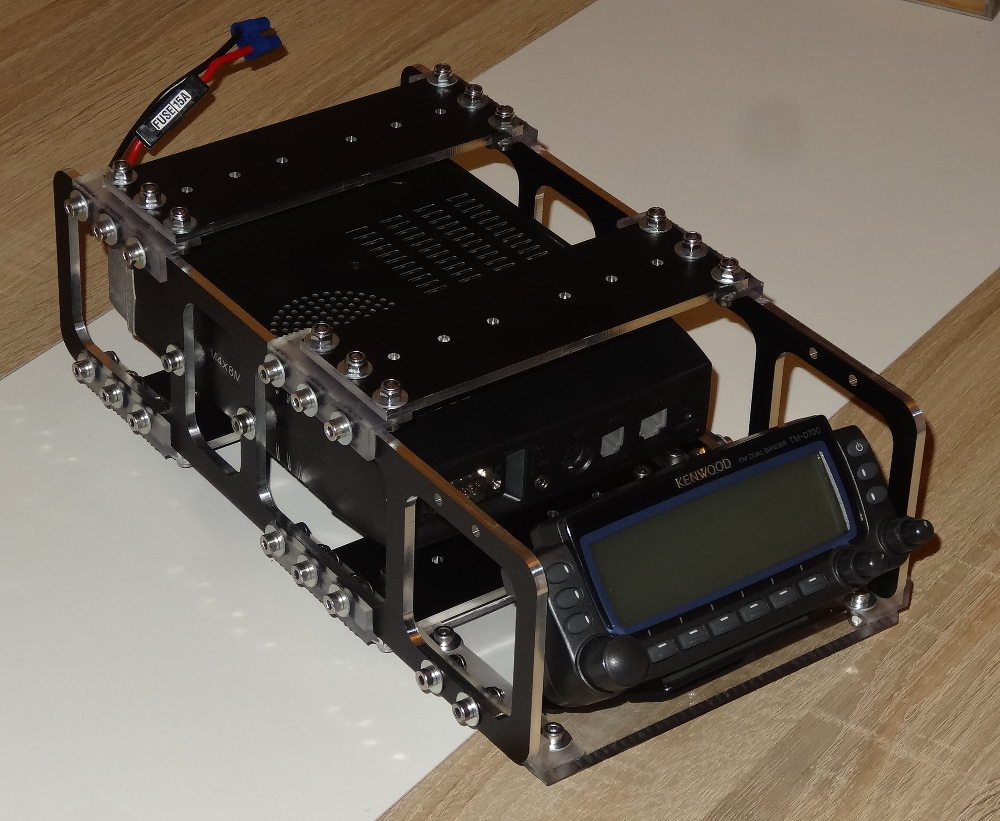
Starting with SOTA
Though I can’t remember exactly how I got the idea to start with SOTA, I vividly remember my first attempt. On a hiking trip up a mountain with my sister and her boyfriend on March 31, 2017, I made my first SOTA activation on OE/OO-247 (Almkogel). Full of hope, I spotted my location by manually typing out an SMS on my mobile phone—and it actually worked, yeah! All in all, I managed to perform 10 amateur radio contacts – called QSOs – on 2m, including two summit-to-summit (S2S) connections (OE5FSL, DO1GER, OE5JKL/P, OE5FSM, OE5RXP, OE5DZL/P, OE5AUL (SK), OE5FJM, OE5ESO/P and OE5YYN).
During various activations in the following years, the faithful OE5 SOTA community helped me time and time again. On every attempted activation I would eventually achieve the minimum required four (and often more) QSOs with different stations necessary to achieve a valid SOTA summit activation.
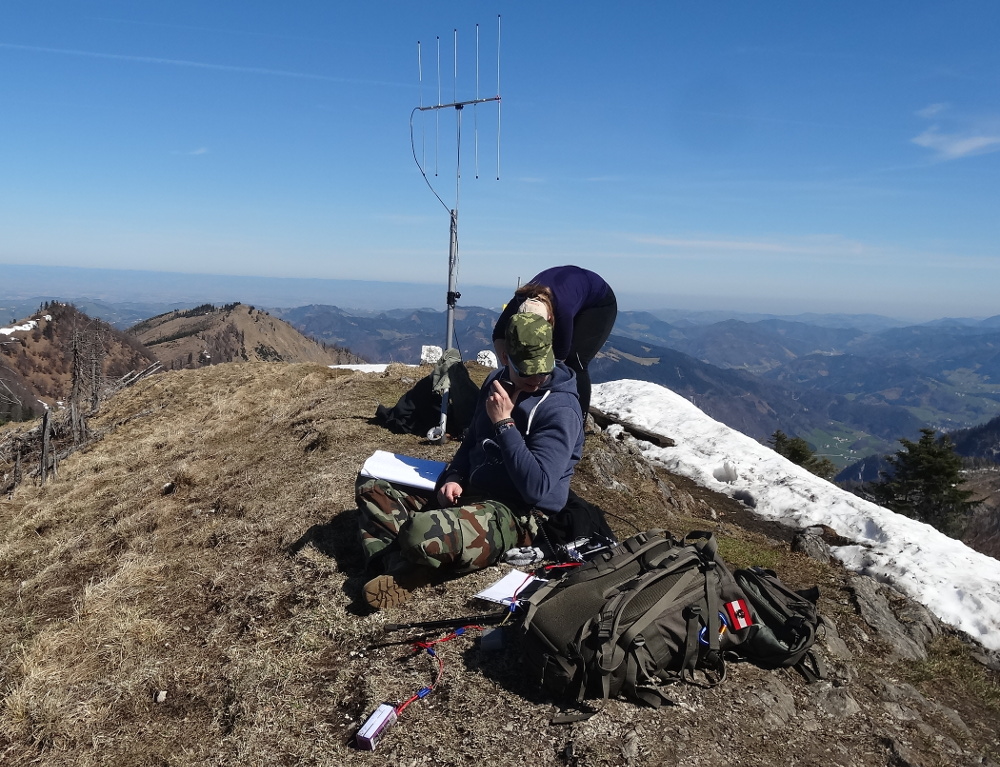
Although the Kenwood TM-D700E can transmit up to 50W on 2m, I thought I’d better buy a dual LogPer SOTA antenna for 2m and 70cm. It looked way cooler than a simple vertical, but I also had to carry way more stuff up the mountain during activations.
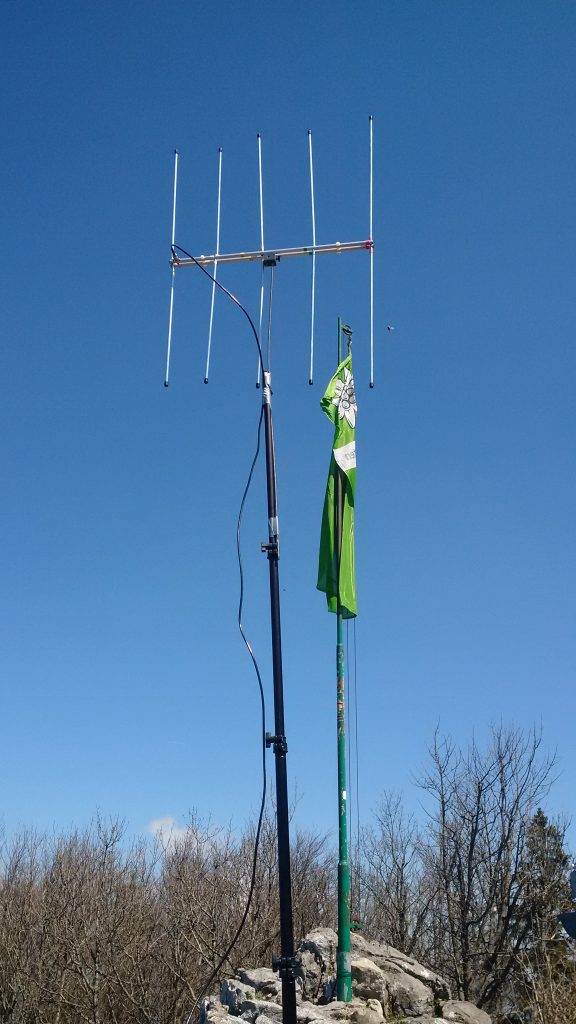
Since I had this fancy antenna, I had to have the right antenna mounting system. I ended up buying a Buddipole™ extensible tripod mast… adding to my weighty load.
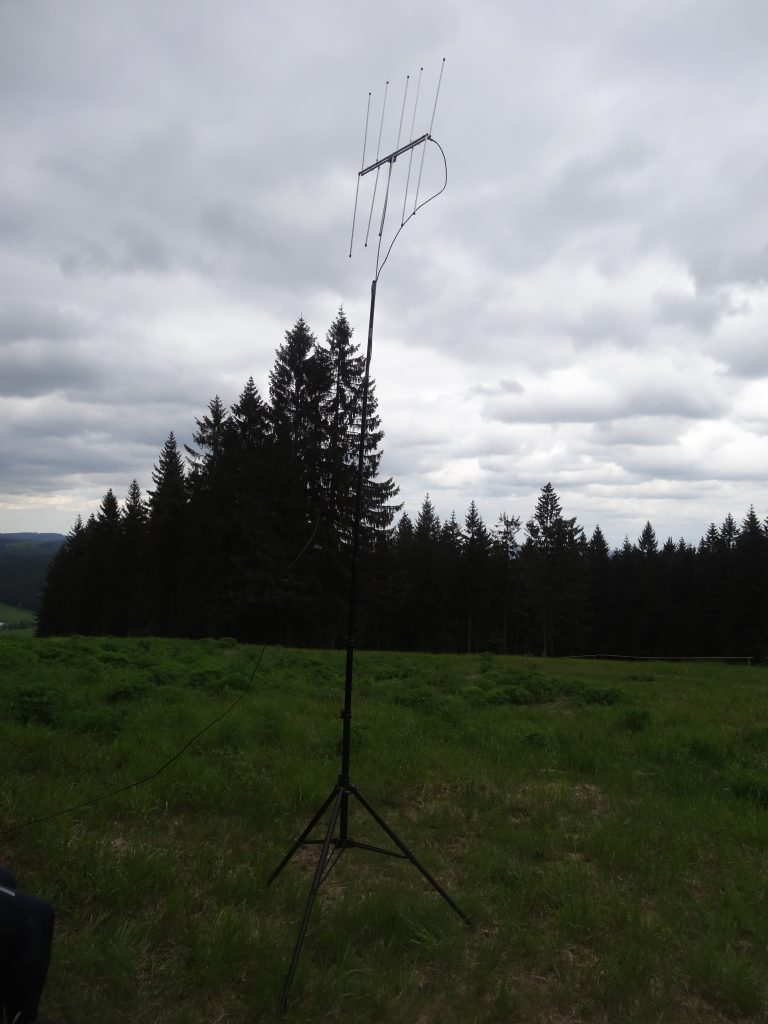
I also put together an energy supply kit. I started with a 5S LiPo/5Ah battery that had been used previously for remote control (RC) model making. This battery reduced the voltage to approximately 13.8V required for operating the Kenwood TM-D700E. As switched power supply units (PSUs) are more energy efficient, I added to the kit a PSU from Amazon to help save the precious energy stored in my big-ass battery.
That PSU, which probably came from China, unfortunately introduced radio-frequency interference (RFI) into the mix. This painfully came to my attention during my OE/OO-287 (Viehberg) activation on May 25, 2017. This summit has a forested top, which hinders effective communication on 2m. But the greater problem was that the PSU started overloading my receiver. The whole of OE5 and OE3 bore witness to my increasingly desperate CQ SOTA calls, made at 50W transmission (TX) power. I couldn’t receive a single call in return. In total, I spent over two hours on the summit calling CQ (that is, making a general call). Afterward, Sylvia OE5YYN even wrote me an email about having heard me well but me not having been able to hear them. Ultimately, I physically separated the PSU from the transceiver as much as possible, which allowed me to talk with both OE5AUL (SK) and OE5YYN. This finally got me enough QSOs to log the summit.
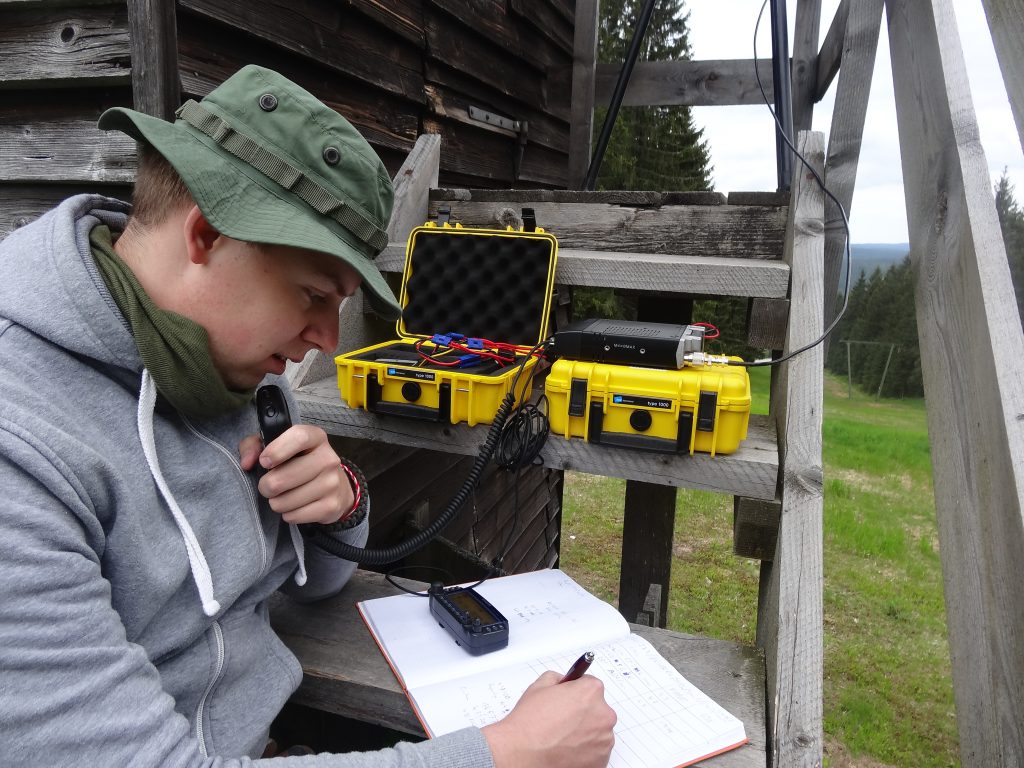
To store all those components, I used B&W Type 1000 yellow outdoor cases. They’re a bit bulky but they have the advantage of being waterproof. Today, I only need to take one of these boxes with me to the summit.
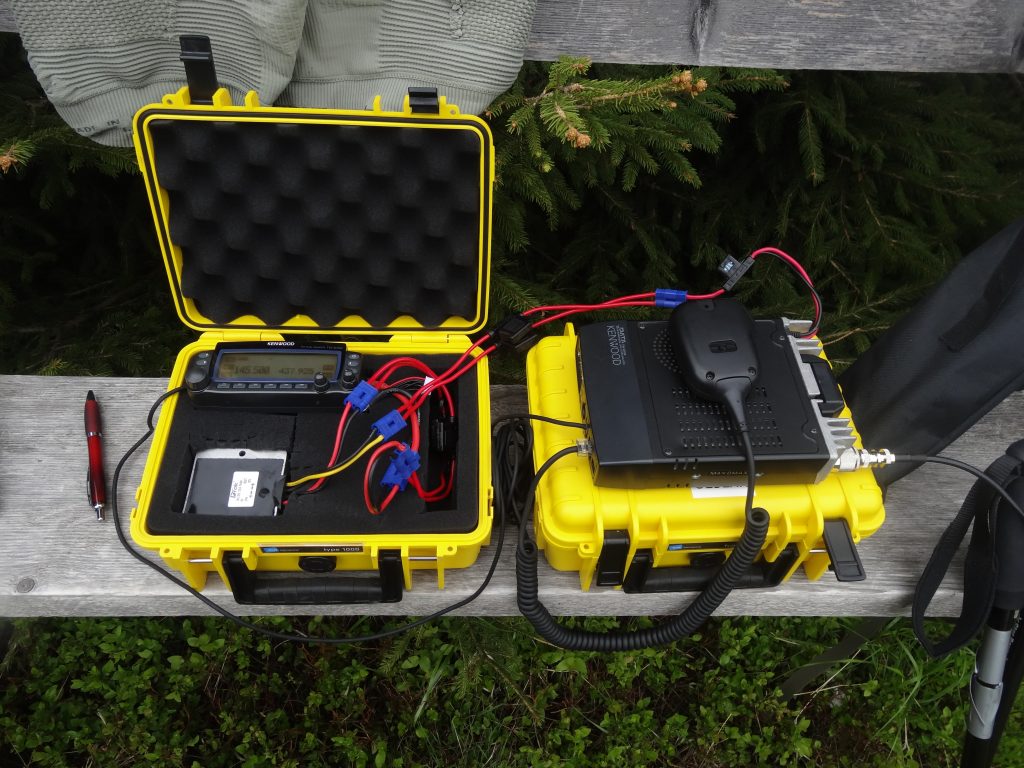
Staying with SOTA
We OE5 activators have the good fortune of an active and reliable chaser crew on VHF frequencies, but it can still be hard to gather those required four points to log a valid activation. Having a capable shortwave radio and antenna setup with you on the summit’s top is, therefore, highly recommended. All across Europe, there’s an active group of chasers and someone will always be QRV (meaning, listening for and answering your call). There has only been one time I couldn’t raise anyone on shortwave during an activation, and it happened when my radio’s microphone was broken.
I decided it was finally time for me to buy a shortwave-capable radio. In a QSO with Martin OE5REO, he mentioned that he had switched over to an Elecraft KX2 and had a barely-used Yaesu FT-817ND for sale. I did a little research and fell in love with that sweet little radio. We went on a shared activation of OE/OO-084 (Eiskogel) on June 28, 2017 to put the radio through its paces. This activation was my first exposure to high frequency (HF) ham radio operation and ended up being my first successful HF summit activation.
Ever since then, I’ve been taking the Yaesu FT-817ND wherever I go. It has never let me down… except for the time I fried the microphone using an external speech compressor accessory…
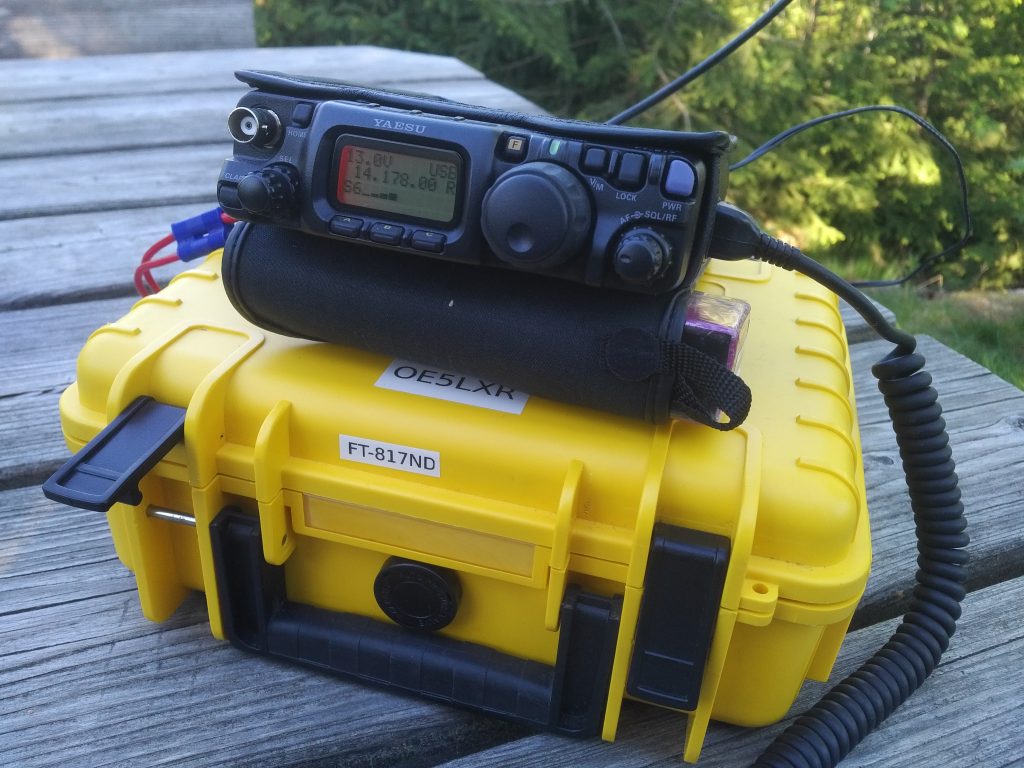
After my debacle with the Chinese PSU from hell, I looked around for other portable power options. I learned that a three-cell (3S) LiFePo battery has a nominal voltage of 13.2 V is perfectly suited to power the Yaesu FT-817ND, which has a preferred voltage defined as 13.8 V ± 15%. There’s more information about this in my post about my portable ham radio setup.
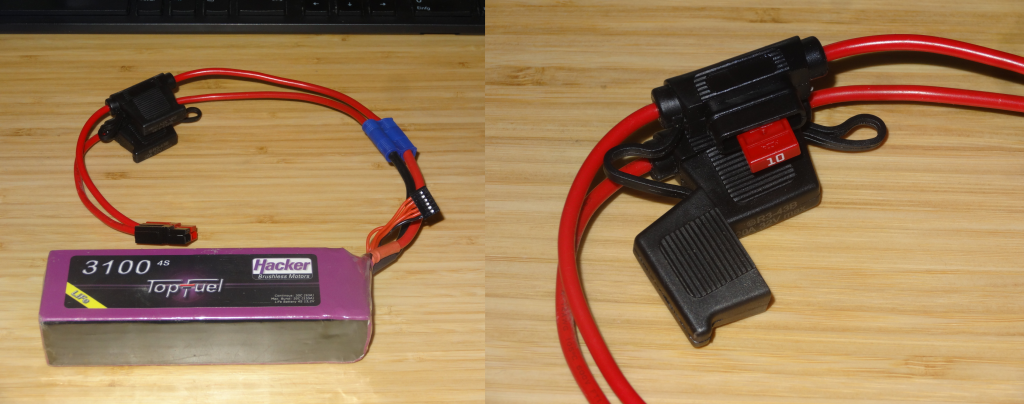
In addition, I ended up copying the antenna setup Martin OE5REO showed me on the OE/OO-084 (Eiskogel) summit. It has an inverted-V configuration with a BALUN on top of the antenna mast and a linked dipole used as an antenna. Today I still use a linked dipole antenna, but I replaced the mechanical links with traps. This allows me to stay seated while changing bands.
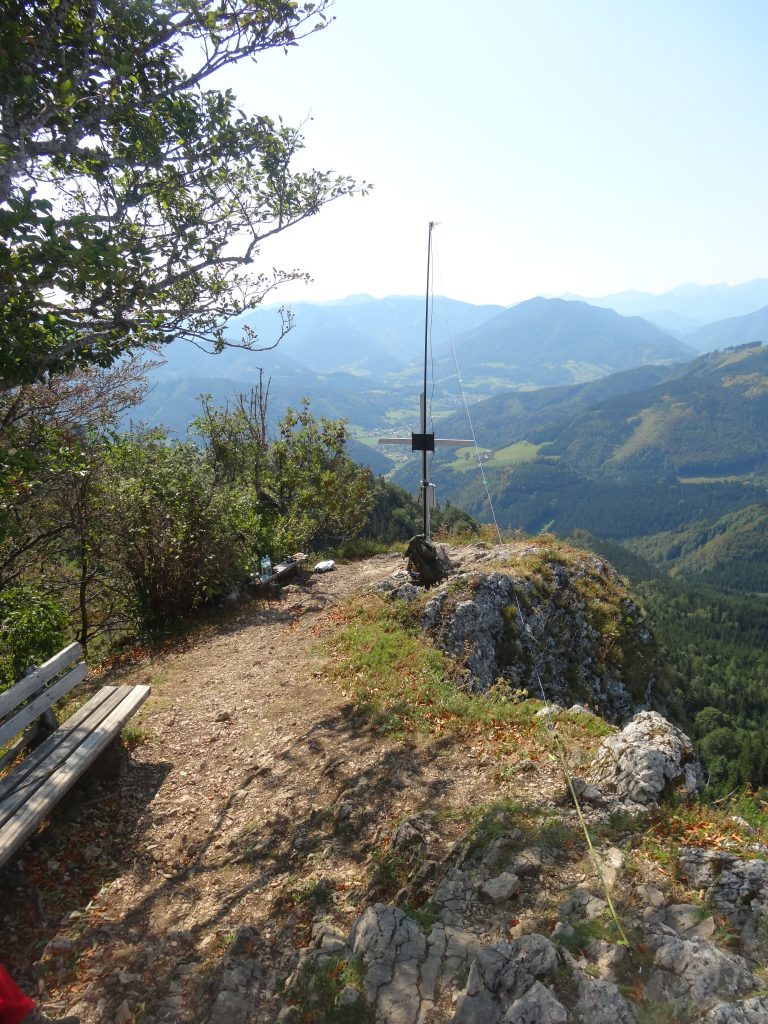
These days, I take two radios with me on every summit activation. The Yaesu FT-817ND serves as a primary radio for HF, but I always include the small 2m rubber duck antenna for VHF communication, too. Another Yaesu, the FT-270R, serves as a backup radio that supports VHF (2m). This kit is considerably lighter and easier to carry then the bulky Kenwood TM-D700E + Frame + LiPo + Energy Supply Kit + whatever else. Thinking back on early days always puts a smile on my face but also, perhaps, a bit of pain in my back…
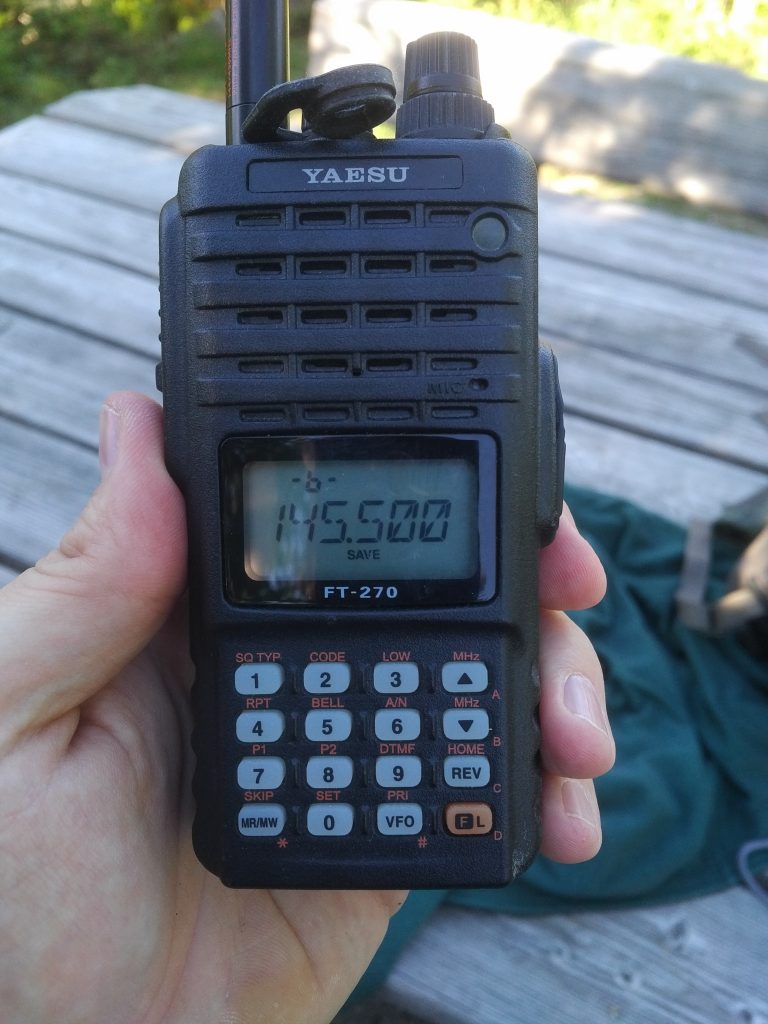
I hope you enjoyed my story! Also, feel free to comment below or send me an email. I’d love to hear about how the ham radio bug bit you or how I could help you get involved with SOTA.

